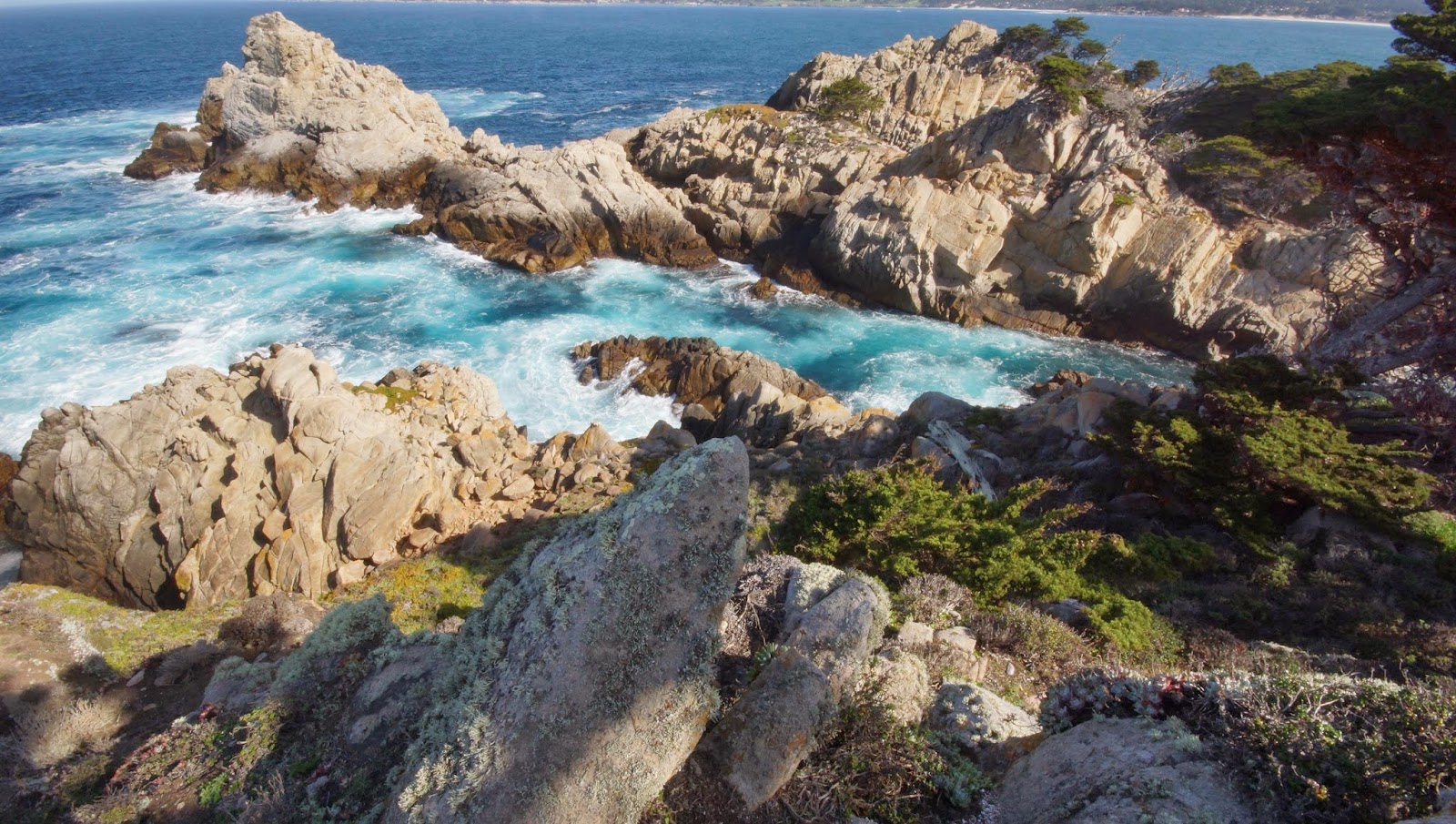Point Lobos State Park
Point Lobos,
the purported ‘crown jewel’ of the California Parks system is on our agenda
while in the Monterey area. This
destination comes complete with another sunny day, though the wind blows when
we arrive at Point Lobos.
 This park has trails
the follow a bluff to viewpoints above the shoreline, trails to the interior of
the park and a long braided trail along the shoreline. Cypress trees are the tree of distinction at
Point Lobos. Redwoods are still
sprinkled along the coast, but here the Cypress dominates.
This park has trails
the follow a bluff to viewpoints above the shoreline, trails to the interior of
the park and a long braided trail along the shoreline. Cypress trees are the tree of distinction at
Point Lobos. Redwoods are still
sprinkled along the coast, but here the Cypress dominates.
Stressed by the recent drought in California
sapling sprouts are few and far between.
Prolific,
poison oak abounds. So, despite the sunny, warm day I’ve covered up with my
hiking pants and a long sleeved sunscreen shirt. When given the chance, we like to show up for
local docent or ranger walks. Though
Jack knows a lot about various forest habitats, getting the perspective and
insight from a local expert is always appreciated.
And so we arrived in time for a guided walk
at 10:00 AM. To become a
docent at Point Lobos requires a six month training period with fellow docents
and various experts in fields of forestry, flora and fauna, marine sea life,
resident land animal populations. and the varied environmental and political
issues of the area. We weren’t disappointed.
Our docent loved Point Lobos more than any other area in California and
engaged our attention along a one mile bluff walk.
He carefully
and frequently pointed out poison oak while providing information about the
wood rat, sea otters, sea lions, and whale migrations. Along with random items that hikers have lost
along the trails, the wood rat gathers woody debris from the forest floor and
builds elaborate nests that can become multi-family, multi-generational homes. The nests are a lot like beaver dams with
tunnels and rooms that serve specific purposes in the lives of the rat. Who knew?
He brought along various ‘show and tell’ items to give us an up close
understanding of aspects of the walk.
 Encouraging
us to use our senses to figure out what we would see next, he has us all
straining to hear the barking of sea lions that appear on a rocky outcrop in
the ocean as we round the next corner.
Out comes his sea lion puppet and he explains the differences between
seals and sea lions!
Encouraging
us to use our senses to figure out what we would see next, he has us all
straining to hear the barking of sea lions that appear on a rocky outcrop in
the ocean as we round the next corner.
Out comes his sea lion puppet and he explains the differences between
seals and sea lions!
Different
legs/flippers, ears, and more distinguish one from the other. Sea otters are frequently sighted floating on
their back and eating or swimming in and out, over and under the waves. Later, pulling out a map of the park, he shows
us how, at one time, the entire area was under private ownership. These landowners knew the area was priceless
as a natural preserve and saw the encroaching land development.
Over time
they bought up much of the region, much of which had already been platted for
sub-development. Eventually they donated it to the state of California for
preservation.
We ended our day hiking along other ocean front trails and
picnicking on the beach.









No comments:
Post a Comment